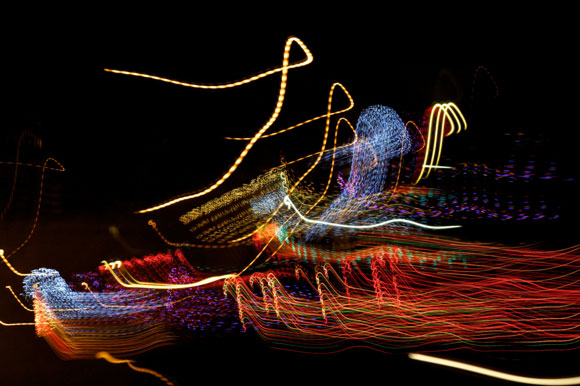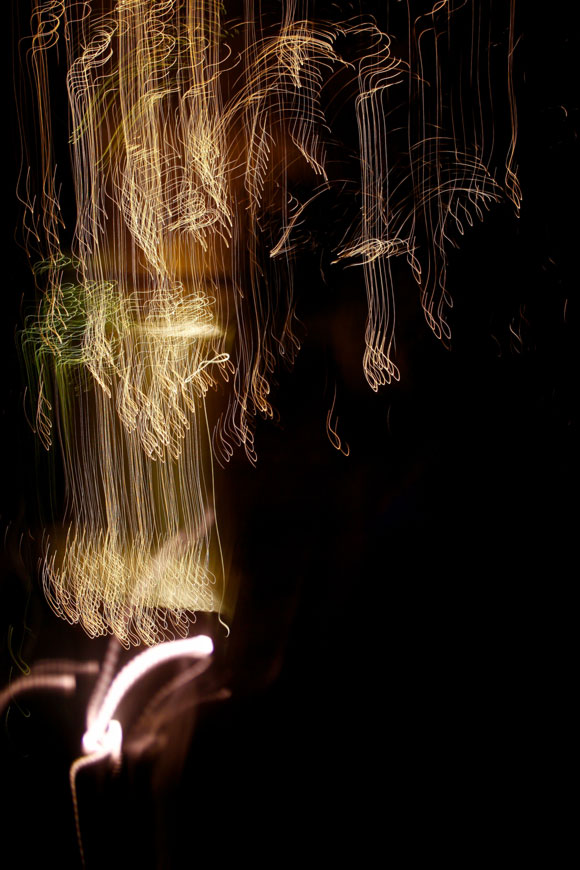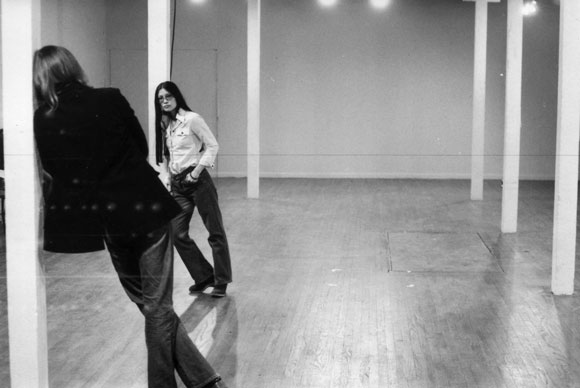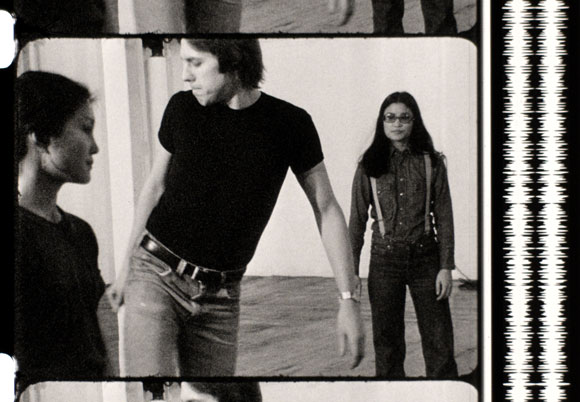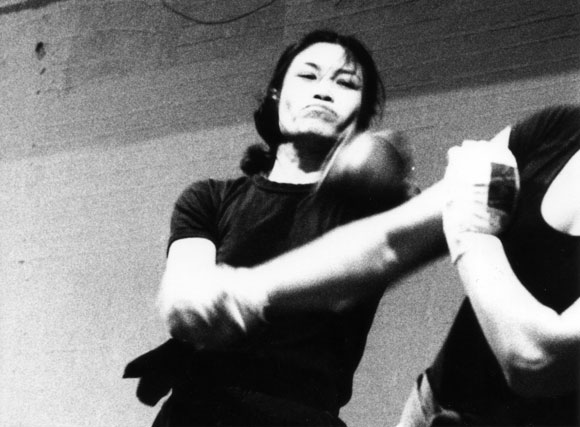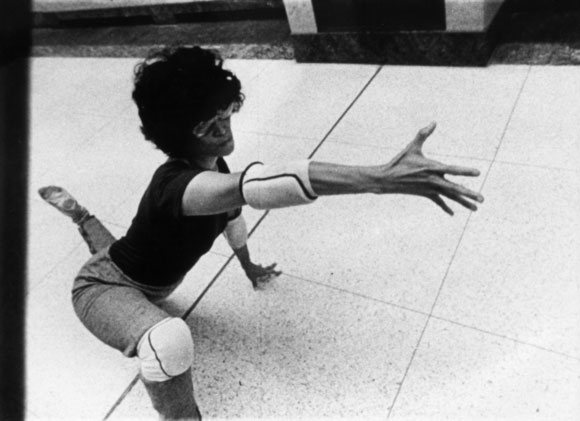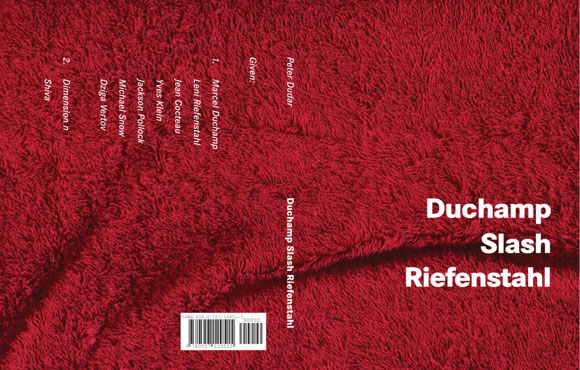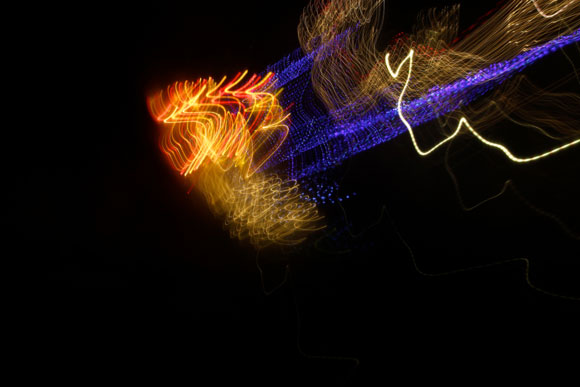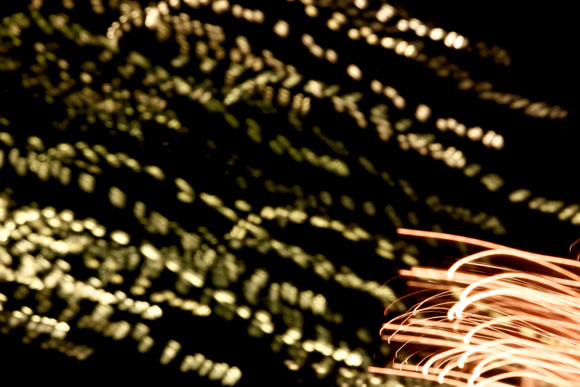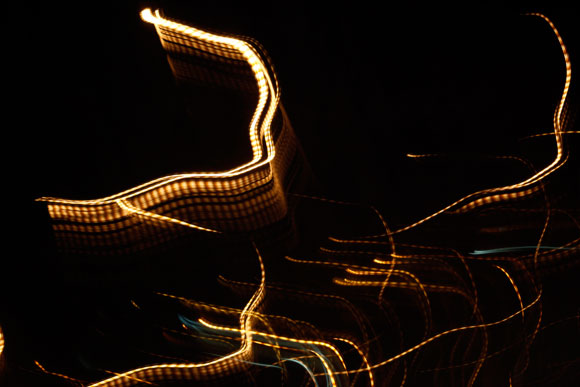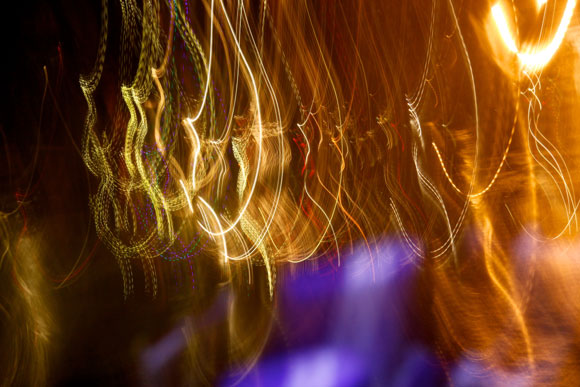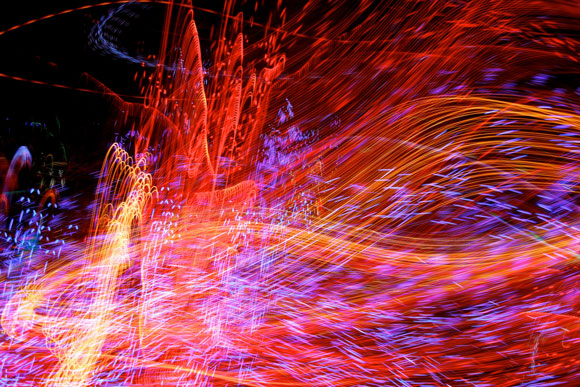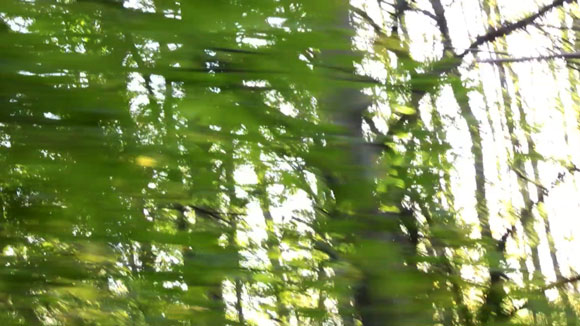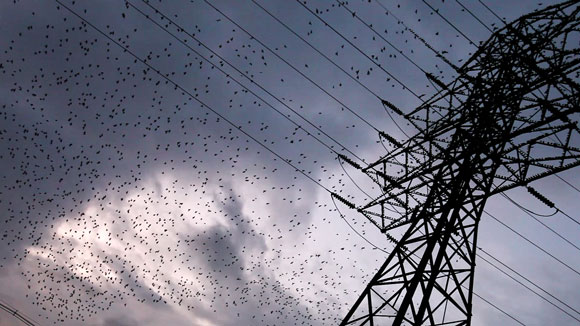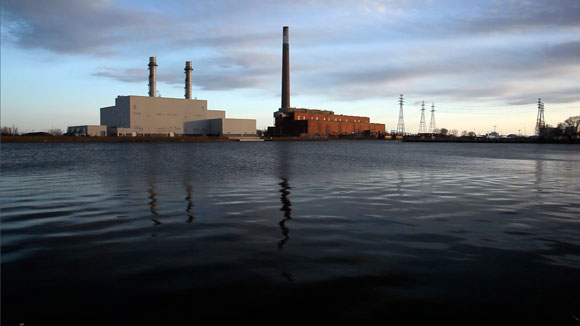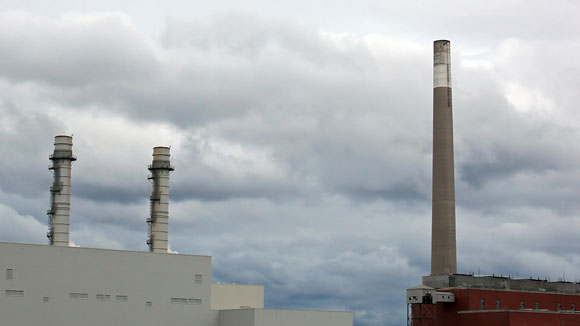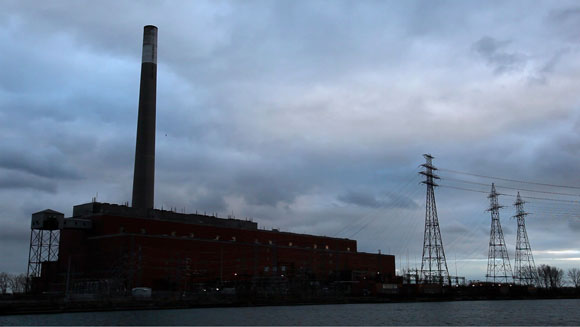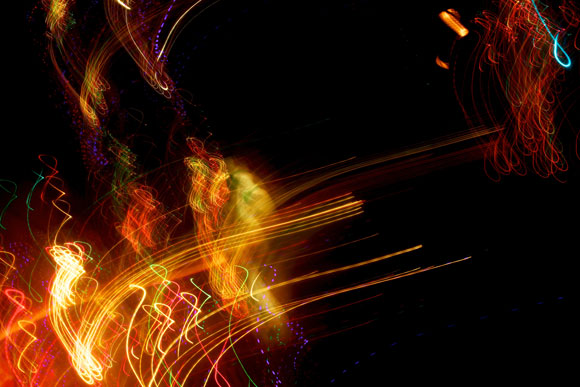Peter Dudar: Shooting Reality “The more one studies the religious and philosophical texts of the Hindus, Buddhists and Taoists, the more it becomes apparent that in all of them the world is conceived in terms of movement, flow and change.... The Eastern mystics see the universe as an inseparable web, whose interconnections are dynamic and not static.... Modern physics, too, has come to conceive of the universe as such a web of relations and, like Eastern mysticism, has recognized that this web is intrinsically dynamic.” Fritjof Capra, The Tao of Physics “The great photographers—if there are to be any—will have to find a way to reclaim photography’s special link to reality. And they’ll have to do it in a brand-new way.” Peter Plagens, Is Photography Dead? Newsweek, Dec 10, 2007
Photo_MG_3221, 2009-2010 (single-gesture) / “Marcel: When you play a game of chess it’s as though you were sketching. The competitive aspect is of no importance, but the game itself is very, very plastic. It’s not geometrical in the static sense of the word. It moves. The pieces are not beautiful in themselves, any more than the form of the game, but what is beautiful — if beautiful is the right word here — is the movement. Beauty resides in the sphere of movement, not in the visual sphere. It is the imagination of movement that makes the beauty.” Peter Dudar, Duchamp Slash Riefenstahl, 1989-2009
Photo_MG_9507, 2009-2010 (single-gesture) / “My point relates to the dynamic crisscross between painting and photography in the 20th century. This crisscross relationship ended at this turn of the century. In other words, photography has become one of the leading media in revealing things behind the visible.” Yuri Mitsuda, Counter-Photography: Japan’s Artists Today, The Japan Foundation 1970s Missing Associates, between here and there Lily Eng and I did our first collaboration as Missing Associates in our studio on Adelaide Street East in Toronto. Subsequently, our performances ranged from Vancouver in the west to Warsaw, Poland in the east. We were the first artists to get Canada Council Arts Awards for doing performance art. And we participated in the first performance art tour of Europe by Canadian artists. Lily was the virtuoso dancer in our partnership, I was the conceptual artist. Prior to this I had been doing process-oriented painting and installation works, so moving into performance seemed like a sensible progression...
Peter Dudar and Lily Eng in Between Here and There (performance), A Space, Toronto / “Missing Associates pursued a style of dance that was diametrically opposed to the Martha Graham modernist school prevalent in Toronto in the 1970s... and were an important, if alienating, component of Toronto’s experimental dance scene.... their collaborations were shocking to the general public.” Dot Tuer, The CEAC was banned in Canada, C Magazine, No. 11, 1986 In my earlier pieces, conversation shaped movement and vice versa. In Between Here and There, two performers improvised dialog, at first inaudible to others. They upped their volume, but only as much as necessary, as they separated and retreated to opposite ends of the space—in the end, only they were privy to all that had been said. Between Here and There was last performed at the Düsseldorf Art fair; those who spoke no English experienced the piece at its purest. I stopped using conversation in my work after that. Crash Points 1, Crash Points 2 “An architect designs a great cathedral. Then, through a hierarchical chain of command, the building operation is broken down into separate departments... That’s top-down design.... Bottom-up design works completely differently.... Suppose we wanted to understand the flocking behavior of starlings.... What is remarkable about the starlings behavior is that, despite all appearances, there is no choreographer and, as far as we know, no leader. Each individual bird is just following local rules.” Richard Dawkins, The Greatest Show on Earth
Linda Eng, Peter Dudar and Lily Eng in Crash Points 1 (16mm film), CEAC, Toronto / “Perhaps the greatest pleasure for the viewer of the film lies in the combination of attractive people engrossed in precise body movements. This intense physicality is beautifully sustained in the skillful textured photography and oh-so-right rhythm of running feet.... It is a movement from theater to film.” Ian Birnie, Dance and Film, Art Gallery of Ontario “Crash Points shows two dancers running laps in a closed room whose very containment and isolation are a metaphor for the structural enterprise.” Mike Hoolboom, Death Dances on: The Films of Peter Dudar In my film Crash Points 1, two performers run laps, etc., in a gallery. Though usually associated with structural films, it differs in one crucial aspect: the feedback between performers and camera. In structural films like Michael Snow’s Wavelength or Back and Forth, the camera is omnipotent: its schematic (zooms, pans, etc.) is top-down, unaffected by persons within frame. In Crash Points 1, the schematic is bottom-up. Like the starlings in the Richard Dawkins quote above, the performers and camera have discretion within local rules: for instance, a performer can take down a copper hurdle (crash point) at will, compelling the camera to pan to the other performer and stay with him until cued to switch again. (In the last sequence, these pans are replaced with direct cuts to the switch.) Crash Points 2 (shot with two cameras) is a two-screen film. Besides revealing differing perspectives on the same actions, the sequences from each camera vary in length, so the screens are out of sync to varying degrees throughout. The screens can only be synced in the mind, using short term memory. 1980s Penetrated (male), penetrated (female) My Penetrated (Male) and Penetrated (Female) films are one-on-one martial arts sparring matches. (The female version is the more visceral, since the opponents are from different disciplines.) Like Crash Points 2, they are two-screen films. And the screens can only be synced in the mind.
Lily Eng and Debra Townsend in Penetrated (Female) (16mm film), CEAC, Toronto / “Missing Associates’... early work was both a violent experience for the audience and a violence to the forms of dance (which were two moments of the same strategy).” Philip Monk, Language and Representation, A Space, Toronto Penetrated (Male) premiered at the nascent Funnel Theatre in Toronto, which co-existed with the Crash n’ Burn punk rock venue (both subsidiaries of CEAC). The film was publicized solely with the word “uncensored”—it was the first CEAC opening attended by police. Penetrated (Female) premiered at the Beursschouwburg Performance Art Festival in Brussel, Belgium. Besides Missing Associates, the other Canadian art reps were AA Bronson’s General Idea and CEAC director Amerigo Marras. 1990s DP (displaced Person) My succeeding films, though not primarily about movement, frequently juxtaposed words with choreographed movement.
Lily Eng in DP (16mm film), R. C. Harris Water Treatment Plant, Toronto / DP, an experimental documentary, was initially dismissed by the NFB (National Film Board of Canada) as fictitious. Subsequently, it was invited to the Grierson Film Seminars, named after John Grierson, the most revered commissioner of the NFB. “DP is powerfully evocative. Many striking images and creative effects. The juxtaposition of words with related film clips is absolutely brilliant.” American Film Festival 2009 Duchamp Slash Riefenstahl Last year, I published a book titled Duchamp Slash Riefenstahl. It is an imagined conversation, etc., etc., etc., between visual artist Marcel Duchamp and infamous filmmaker Leni Riefenstahl. Duchamp Slash Riefenstahl reiterates many interpretations pertaining to movement, light and ‘dimensionality’ in 20th century art.
“Marcel: Nude Descending a Staircase is a static composition of static indications of the various positions assumed by form in motion.... In the composition, a form passing through space crosses a line; and as the form moves, the line it crosses is replaced by another line, and then by another and yet another. Leni: The Greek word ‘ekstasis’ means ‘to be outside oneself’. Rhythmic motion creates ‘ekstasis’. A dancer focuses her feelings on the beat, which has no preferred direction in time. A forward beat is indistinguishable from the same beat backwards. Tension caused by the perception of passing events disperses — the dancer coalesces with the universe and returns to a childhood when only the eternal ‘now’ existed. Similarly, in cinema, I start with the rhythm, then fuse it with the filmic material, creating a controlled movement of highlight and retreat. This makes the viewer part of the depicted event. And in the mountains the feeling of directionless continuity focuses on eternal rest, not rhythm. The eye ranges freely through the still, pure air and traces out contours built for eternity. Past and future co-mingle in the eternal ‘now’. The tension of selfhood disperses in the presence of total detachment. Marcel: In this sequence, the editor has sliced the substrate — the film stock — enabling the divers to defy the law of gravity. And the divers are underexposed, stripped of their identifying features. They’ve become shadow beings. In my Bride Stripped Bare by her Bachelors, Even, the substrate is glass. And three-dimensional representations are the flat shadows or reflections of the fourth dimension which is invisible to our eyes. Three-dimensional beings reduced to shadow intimate a movement between dimensions. Leni: The opposition of light and shadow points to the dualistic principle of existence. The extremes of pure light and pure shadow are equivalent to spirit.” Duchamp Slash Riefenstahl ends with Leni Riefenstahl and Marcel Duchamp ‘interpreting’ the cosmic dance of Shiva — creator and destroyer of universes. 2010 apparent reality, deeper reality “The effectiveness of wu-wei can be seen to derive from two principles of energy management. The first principle is that the forces of nature, as a whole, are stronger and more effective than the forces deployed by an individual alone. When one understands the way of nature and can merge with its forces, one can effortlessly achieve striking results.” Philippe L. Gross and S. I. Shapiro, The Tao of Photography Establishing scene: a Japanese garden, in front of a stone inscribed with the word “synchronicity”: In the Aum Namah Shivaya mantra, Namah Shivaya is Shiva (Na = earth, Ma = water, Shi = fire, Va = air, Ya = aether). The constituents of Aum are usually interpreted something like this: A (Ah) consciousness in its waking state; U (ooh) awareness of the dream plane or other world; M (Ma) consciousness and unconscious mind unified (versus the illusion of duality perpetuated by Maya); Aum (the ‘original vibration’) is the totality. When I use the terms “apparent reality” and “deeper reality” in following passages, “apparent reality” sort-of-equals A (ah) and “deeper reality” sort-of-equals U (ooh). “In practice, matters are more complicated, since artists and viewers alike want art to mean something, usually something deep— the emphasis here expressing a sort of table-thumping frustration over articulating what deep meaning actually is.” Mark Kingwell, Opening Gambits: Essays on Art and Philosophy Single-Gesture Photo series
Photo_MG_6483, 2009-2010 (single-gesture) / “A photograph... is perfect; it does not change; it is absolute, and therefore autonomous and unconditional. It has no style. The photograph is the only picture that can truly convey information, even if it is technically faulty and the object can barely be identified. A painting of a murder is of no interest whatever; but a photograph of a murder fascinates everyone. This is something that just has to be incorporated into painting.” Gerhard Richter, from Dietmar Elger’s Gerhard Richter: A Life in Painting Since I’m capturing images while moving the camera, usually for less than 1.5 seconds, I’m only recording a single gesture in each. Most single-gesture photos are shot at arms length, composed (of necessity) via a “live view” LCD rather than a viewfinder. (Live view LCDs were not available on pro-level DSLRs until Canon introduced its full-frame Eos 5D Mark II in 2008.) Single-gesture photos are shot at night or during the transition from day to night. All single-gesture images are constructed in-camera. None are constructed from my imagination. They are about capturing motion and direct light sources, primary constituents of reality. Beyond that, they are about invoking an ineffable (deeper) reality. All capture processes mediate between source and result. The Impressionists tried to capture reflected light—a single-gesture photo, which captures light sources, is less mediated. The single-gesture image is comparable to a glance. The captured glance is less about its maker. Though the duration of a gesture is brief, it is fully captured in these images. Every image says something about time. And since the image is nonobjective, the time depicted is transcendent. Note: usually a spontaneous gesture produces a better photo than a premeditated one. Since single-gesture photos are mostly nonobjective, and meant to have no predetermined textual associations, they are untitled. “Alone, the Surrealist wanders the streets without destination but with a premeditated alertness for the unexpected detail that will release a marvelous and compelling reality just beneath the banal surface of ordinary experience.” Henri Cartier Bresson from Peter Galassi’s, Henri Cartier Bresson, The Early Work “(Thomas Hart Benton) drove his kind of realism at me so hard I bounced right into nonobjective painting.” Jackson Pollock, from Berton Roueche’s Unframed Space, New Yorker, Aug 5, 1950
Photo_MG_9226, 2009-2010 (single-gesture) / “Photographs are not multiple depictions of some single reality, waiting out there to be cornered and cropped, and somehow regulating, even in the cornering and cropping, what the image means. Rather, photographs offer multiple makings. The presented image is not a reflection, or even an interpretation, of a singular reality. It is, instead, the creation of a world.” Mark Kingwell, Opening Gambits: Essays on Art and Philosophy Single-gesture photos touch on two historical precedents, primarily in painting: Surrealism and Abstract Expressionism. Is a single-gesture photo with an identifiable source (surrealist) less transcendent than a nonrepresentational (abstract expressionist) photo? Like the Surrealists’ cadavre exquis and the Abstract Expressionists’ painted gestures, these images incorporate chance (synchronicity?) to varying degrees. Like others, Jackson Pollock transitioned to Abstract Expressionism from Surrealism, whose theoretical underpinnings included a striving for the ‘archetypes’ of myth, a dimension of reality interpreted by Carl Jung as the ‘collective unconscious’. Jackson Pollock’s canvas was “an arena in which to act.” Accumulating gestures on canvas was his means of making energy and motion visible, of creating a unified field (Aum). Abstract Expressionist painters aimed for the collective unconscious by transgressing the personal unconscious. But every gesture is invested with personality (ego). And an accumulation of gestures is more an imprint of a personal unconscious than a snapshot of the collective unconscious. The single-gesture photo (comparable to a glance) is less invested in the individual: it is a truer indicant of something deeper. (One ‘sees’ deeper reality peripherally, not by staring at it.) A single gesture doesn’t make much of a painting. A single-gesture photo is not an accumulation of gestures, but it is complex—it is a fully registered glance. A painting made by accumulating gestures = fragments of time. A single-gesture image = one pure moment. Are my intentions at all apparent? Does anybody, uninitiated, know what Jackson Pollock was really up to?
Photo_MG_3349, 2009-2010 (single-gesture) / “In 1931 Evans noted that ‘the element of time entering into a photograph provides a departure for as much speculation as an observer can make.’... Evans also uses a Proustian metaphor, in which the image goes past two states in order to achieve, not like Weston a transcendent object, but transcended time.” Gilles Mora and John T. Hill, Walker Evans, The Hungry Eye
Photo_MG_4339, 2009-2010 (single-gesture) / “To put it bluntly, one is now allowed to look at photographs in the way one... has taught us to look at paintings, as densely composed, deeply absorptive compositions that compel aesthetic conviction.... I think it terribly interesting to ask what it means to ‘see something as a photograph,’ especially something that doesn’t look like a photograph at first.” W. J. T. Mitchell, Is Photography Over? Another So-Called Crisis, http://blog.sfmoma.org/tag/is-photography-over/ In his Newsweek article quoted earlier, Peter Plagens notes that “As gallery material, photographs are now essentially no different from paintings concocted entirely from an artist’s imagination, except that they lack painting’s manual touch and surface variation.” Jackson Pollock came to see surface texture as a subversion of the unified field. In his last works he actually stained his canvases to unify pigment and ground. Besides staining canvases, Jackson Pollock tried out a film-like substrate: glass. Photo-based images have minimal surface texture, with pigment embedded—figure and ground are unified. Although Jackson Pollock’s stained paintings met with relative indifference, stained color field painting took off after his demise. Throughout painting’s history, many aimed for undifferentiated surfaces. It made pictures seem more real. (“[Gerhard] Richter moves through a phase of uniform wiping... until finally all visible traces of manual painting have been suppressed, thereby attaining a rather close approximation to the original photographs.”)
Photo_MG_4562, 2009-2010 (single-gesture) / “Andre Bazan’s... ‘The Ontology of the Photographic Image,’ revolved around his conception of the relation of image to reality—as he conceived it. He argued that, in photography, ‘an image of the world is formed automatically, without the creative intervention of man. The personality of the photographer enters into the proceedings only in his selection of the object to be photographed and by way of the purpose he has in mind.’ He claimed that photography ‘affects us like a phenomenon in nature’—and defined the cinema as ‘objectivity in time.’” Richard Brody, Everything Is Cinema: The Working Life of Jean-Luc Godard Single-Motion Video series “This process of moving between the conscious and the unconscious, between what ancient cultures described as the visible and the invisible worlds, is one of the definitions of spiritual experience. And while I’ve always been ambivalent about formalizing this, I think every artist needs to be more cognizant of the spiritual nature of their work, and its place as part of a great tradition that stretches back through time.” Bill Viola, from Jacquelyn Baas’ and Mary Jane Jacob’s Buddha Mind in Contemporary Art “At the cinema, we do not think, we are thought.” Jean-Luc Godard, from Richard Brody’s Everything Is Cinema: The Working Life Of Jean-Luc Godard Though related to single-gesture photography, single-motion videos are not single gestures, they are ‘extended’ gestures—that is, their content is encompassed by one dominant motion. Nonrepresentational film has precedents like Paul Sharit’s Analytical Studies IV: Blank Color Frames, in which he projected pure color. But single-motion videos are representational. They are way stations between apparent and deeper reality. (Robert Bresson: "What is—face-to-face with the real—this intermediary work of the imagination?") Forest (With Dissolves)
Forest (with Dissolves), HD video, Guildwood Park, Toronto / “Leni is reclining, suspended in mid air, just above a stream of vivid colors that cross the frame from left to right. She is positioned somewhat like Marcel’s nude in Given. But instead of Marcel’s cylindrical gas lamp, she still holds a bare flame in her upraised left hand. As Marcel approaches, the constituents of the color stream become apparent: scarlet-crimson, blush-pink, salmon-orange and silver-white Oriental and opium poppies; garlands of long, incised leaves; and iridescent plumaged birds of paradise with elongated tails and brilliant ruffs. The stream is an animated version of the tapestry that covered the divan in Jean Cocteau’s salon. Leni: the stream divides this place from the rest of the world.” Peter Dudar, Duchamp Slash Riefenstahl, 1989-2009 In Crash Points 1, the predominant motion is panning. Forest (with Dissolves), shot in a lightly foliaged forest, consists entirely of tracking shots captured at slow shutter speeds. There are three distinct planes. On the soundtrack, foreboding voices and evidence of other human activity nearby redefine what seems to be a rural setting. Forest (with Dissolves) uses bottom-up editing, as in Crash Points 1. But here, the cuts are determined by the topography: only instances with smeared foregrounds are used—and overlapped via dissolves to create an uninterrupted stream from shot to shot. Forest (with Dissolves) is a painting evolving in its frame. Starlings (At Nightfall)
Starlings (at Nightfall), HD video, Port Lands, Toronto / “Sometimes a wind comes before the rain and sends birds sailing past the window, spirit birds that write the night, stranger than dreams.” Don DeLillo, Point Omega In Starlings (at Nightfall) the camera is static, the motion is within frame: a devolving spiral executed by thousands of birds. The starlings follow local rules, as described in the Richard Dawkins quote near the start of this article. The descent of the starlings (in the vicinity of a power transmission tower) coincides with the movement of post-storm clouds toward the lower right of the frame. The underside of Toronto’s Gardiner Expressway, the end point of the starlings’ downward spiral, is off camera. Only the soundtrack attests that this is an urban environment. The video starts overexposed (light) and ends underexposed (dark), the middle ‘a brief crack between eternities.’ Power Plants (With Strobes)
Power Plants (with Strobes) (left, middle and right screens), HD video, Port Lands, Toronto / “(Dirac’s) fascination with the nature of beauty had powerful resonances for him.... The beauty of a fundamental theory in physics has several characteristics in common with a great work of art: fundamental simplicity, inevitability, power and grandeur. Like every great work of art, a beautiful theory in physics is always ambitious, never trifling.” Graham Farmelo, The Strangest Man: The Hidden Life of Paul Dirac, Mystic of the Atom Like Crash Points 2 and Penetrated, Power Plants (with Strobes) is a multiscreen piece, in this case a triptych intended for installation viewing: 1. The left screen is a wide shot dominated by water, waves reflecting sky; on the horizon are the Portlands Energy Center (PEC) and the decommissioned Richard L. Hearn Generating Station. Like the power transmission tower in Starlings (at Nightfall) the power plants are static; nature all around is dynamic. As in Starlings, nightfall descends: the power plants are reduced to shadow, the sky accumulates detail. The three screens are out of sync, each in a different stage of transition to a darkness punctuated by ‘artificial’ light— the realm of the single-gesture photo. Unlike Crash Points 2, Penetrated, and Forest (with Dissolves) changes happen in ‘cosmological’ time— instead of using short-term memory, syncing the screens in the mind requires awareness of processes in nature. This Portlands Energy Center is (mostly) the source of the light captured in my single-gesture photos. elsewhere “The inexpressible is the only thing that is worthwhile expressing.” Frederick Franck, The Zen of Seeing “In a work of nonfiction we almost never know the truth of what happened. The ideal of unmediated reporting is regularly achieved only in fiction, where the writer faithfully reports on what is going on in his imagination.” Janet Malcolm, The Silent Woman
Photo_MG_0733, 2009-2010 (single-gesture) / “The pistol-shot of the painter’s eye dislocates the real. Then the painter puts it up again and organizes it in that same eye, according to his taste, his methods, his Ideal Beauty.” Robert Bresson, Notes on Cinematography Single-gesture photos and single-motion videos are not literal snapshots of deeper reality. They are paintings; a means of breaking away from prevailing realities. Apparent reality, as fine art, has been shot to death. Fine art is elsewhere. |
